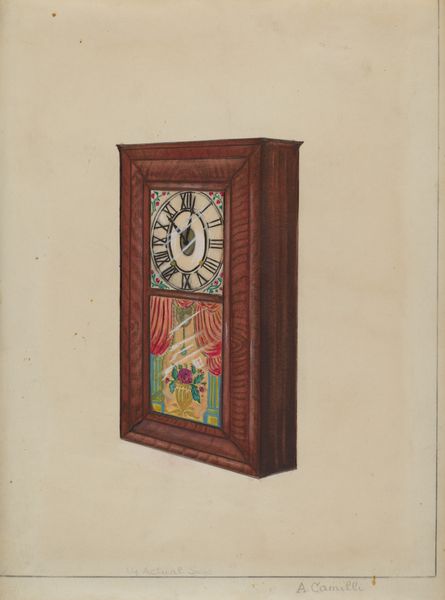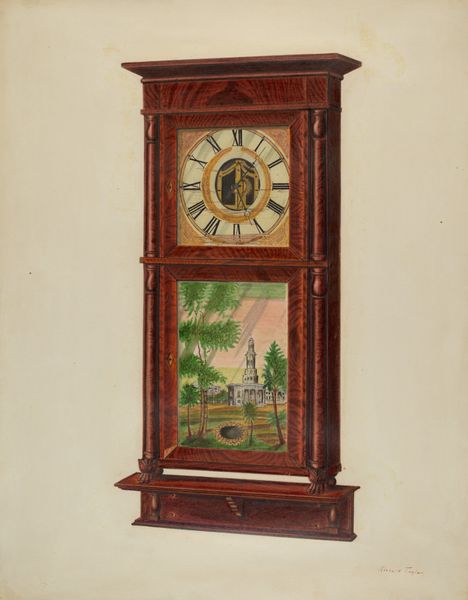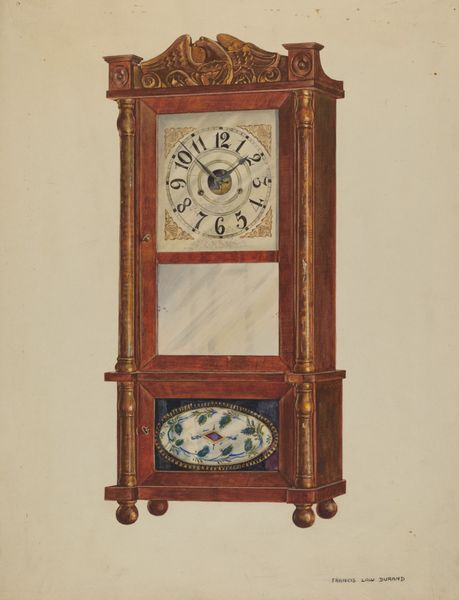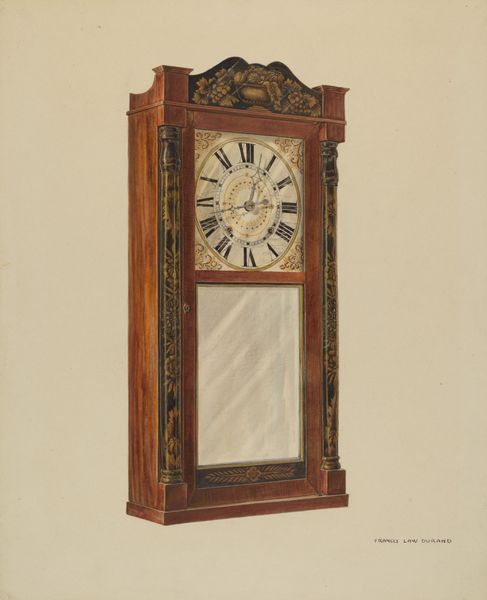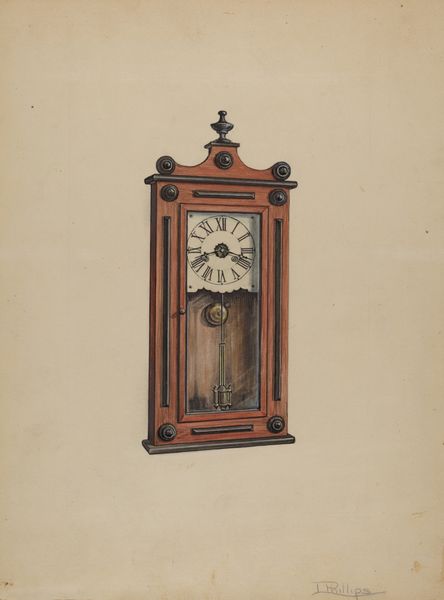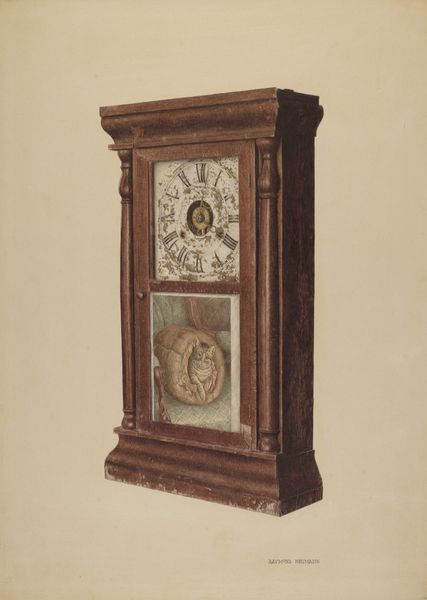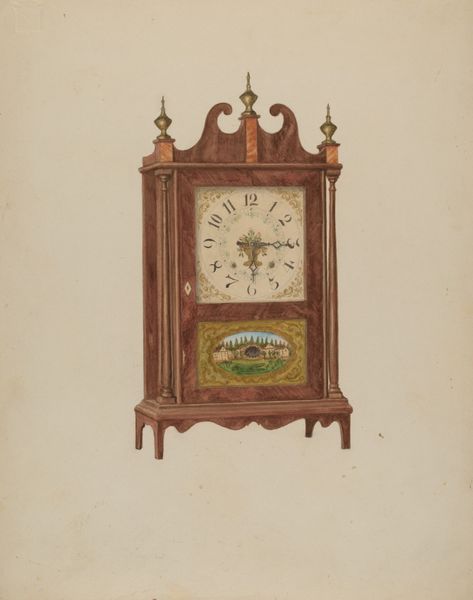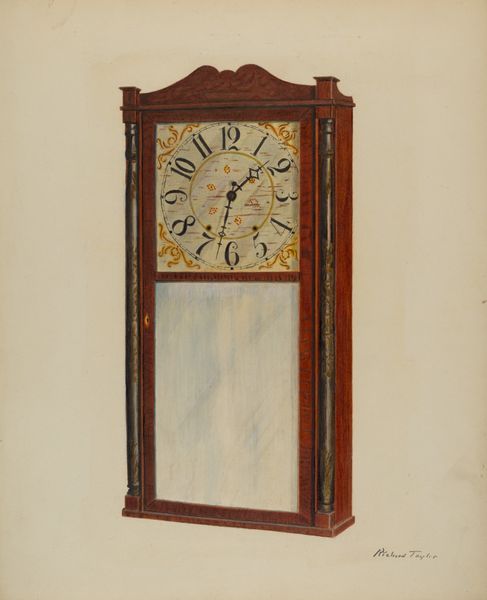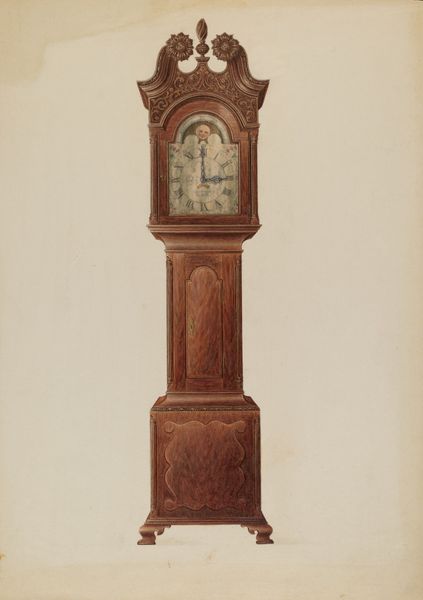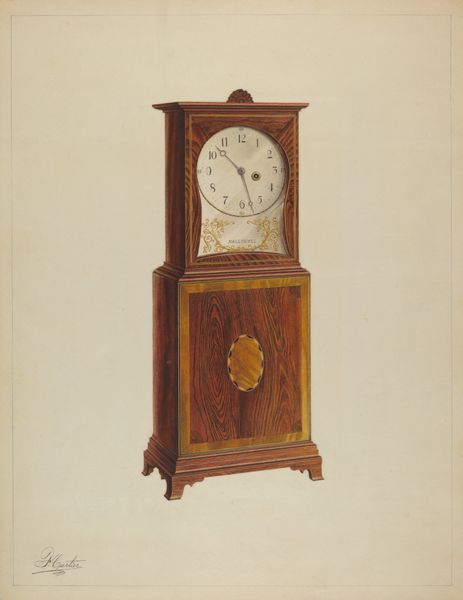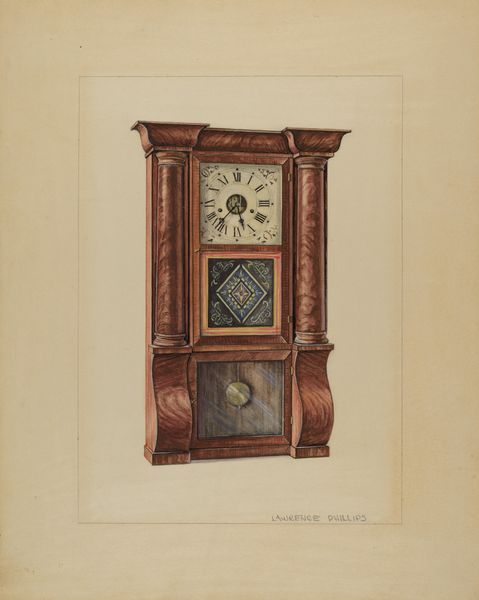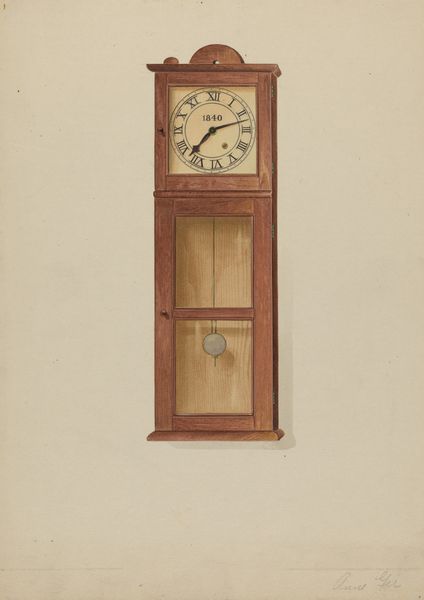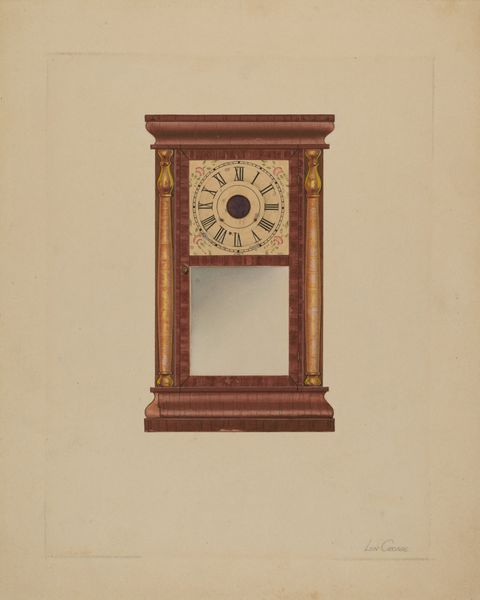
drawing, coloured-pencil
#
drawing
#
coloured-pencil
#
coloured pencil
#
watercolor
#
realism
Dimensions: overall: 35.5 x 26.7 cm (14 x 10 1/2 in.) Original IAD Object: 33"high; 22"wide; 7 1/4"deep. See data sh. for dets.
Copyright: National Gallery of Art: CC0 1.0
Curator: This is Ernest A. Towers, Jr.’s, "Mantel Clock," dating from about 1939, executed with colored pencils and drawing. Editor: Immediately, it strikes me as an exercise in muted precision. The somber palette alongside the meticulous lines… there's a stillness, an almost melancholic silence to it. Curator: Indeed. The image captures the solidity and material presence of the clock. The grain of the wood, for instance, is carefully rendered with gradations in colored pencil to produce visual texture. Editor: And that grain tells a story. A story of middle-class domesticity during a time when industry started overtaking older crafts. What was the cultural context for Tower’s realism, and why this piece? Curator: The era leading up to World War II saw many American artists looking inwards, finding artistic inspiration in everyday scenes and objects. The realism movement was interested in representing authentic and accessible experiences of modern life. Editor: It’s almost uncanny how effectively Towers uses just colored pencils to invoke mass-produced materiality. The very color invokes both traditional styles and more economical construction. Does the pendulum offer some further symbolic content? Curator: The pendulum could suggest the constant forward progression of time, but this reading depends, I suppose, on a structural analysis where its components, its colors and framing devices become semiotic. I think that risks losing sight of the real subject, which is… Editor: That art deco revival, that blend of old and new right before the world changes entirely. Interesting. Almost as if someone foresaw their own moment in time disappearing, in fact. I leave contemplating the complex weight it carried… Curator: ... and for capturing it with such dedicated draftsmanship. Perhaps we can say it is a way to memorialize, or arrest, an object belonging to a quickly changing past.
Comments
No comments
Be the first to comment and join the conversation on the ultimate creative platform.
